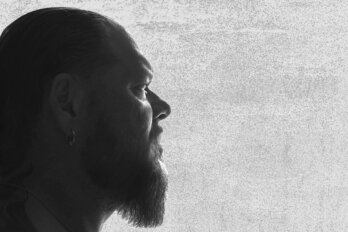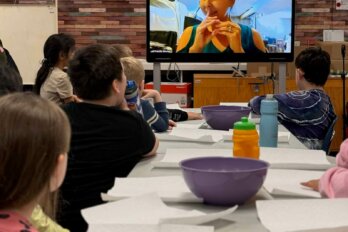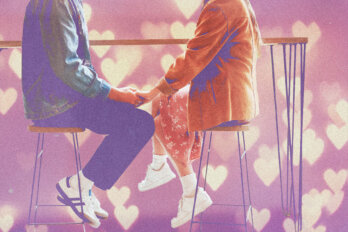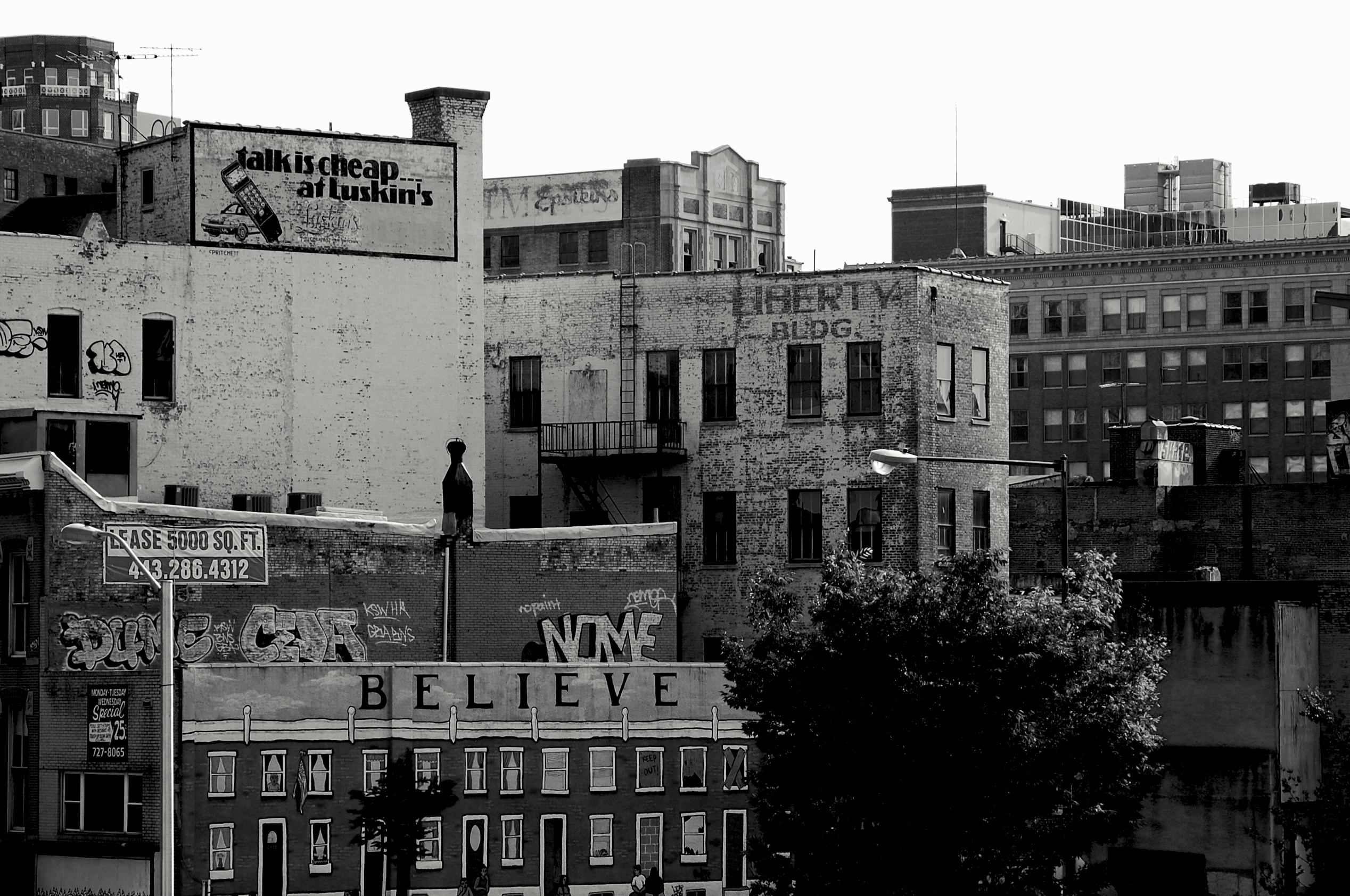
Every time I tell people I went to university in Baltimore, they raise an eyebrow before asking if it was like living in The Wire, David Simon’s brutally realistic television depiction of the city’s corruption and crime. People want to know if I saw drug deals go down on the corners or in front of the row houses of West Baltimore. More recently, since the death in police custody of Freddie Gray and subsequent protests and riots, people have started asking me about Baltimore police. Were they violent? Racist? Both?
My typical answer is a vague, “Baltimore definitely has its problems, but I liked it”; which of course isn’t much of an answer at all. Did I see drug deals or didn’t I? Was the place an inner-city hell or not? The truthful answer is a mucky and even less satisfying, “sort of.” I didn’t hang out around the corners and row houses where no doubt plenty of drug deals were taking place. I was at Johns Hopkins University, whose Homewood campus in the north of the city is made up of an idyllic set of red-brick buildings and greenery. It’s bordered by a couple sketchy neighborhoods, but their sketchiness is decidedly mild by Baltimore standards. And the campus is also bordered by an art gallery.
So I was sheltered. Yet not so sheltered as to be oblivious, either to the mess that Baltimore was (and still is) or to the surprising vibrancy that can exist in that mess. Every time I walked from campus over to Greenmount Avenue, to catch a bus to the mall in suburban Towson, I would focus my eyes on my feet as I passed a series of derelict pawn shops and dubious transactions in progress. I felt like I stuck out on Greenmount in the same way that I stuck out in many Baltimore neighbourhoods which I avoided but sometimes drove through when I was on my way somewhere else, or drove into when I was lost. These neighbourhoods were poor; they were black; and the people in them had an empty look in their eyes that did not change when I passed, either on foot in my dissonant Eddie Bauer shoes or on the road in my discordant Honda Civic. (I quickly realized that when driving around Baltimore, the best barometer for how lost I’d become was the number of Japanese cars around. The fewer there were, the further I’d strayed.)
That last part about people not reacting to me surprised me. As a nineteen-year-old freshman at Hopkins, I was a white Canadian who’d been born and raised in Toronto in the seventies and eighties. I was quite used to interacting with people of different colours, races, and ethnicities—the Toronto of my youth was thoroughly multicultural; my childhood friends’ skin colours and religions ran the gamut. But their social classes didn’t. They ranged pretty much from lower middle-class to upper-middle-class. I’d had no experience with concentrated poverty. Save for some brief forays into poorer parts of Miami, I’d never seen a true inner city—in the full, dilapidated American form—in person. So somehow I’d expected the experience to be like what I’d witnessed on movies and TV—where the white person stumbles into the ghetto and is immediately mugged or verbally harassed or at the very least mercilessly mocked. It had never occurred to me that in real life the people in said ghetto might be too tired or defeated or drugged out or otherwise occupied to care about my incongruous presence. Nor had it occurred to me that, actually, the people in said ghetto might be a lot of different things, including cheerful and playful and bored.
That was a lesson I learned from a young girl I tutored through a Hopkins mentoring program. Her name was Lakia and she was probably about seven years old when we worked together. I knew Lakia came from the sort of row houses The Wire later made famous. That was the point of the program; the privileged Hopkins students would give back to the community by helping and serving as role models for Baltimore’s underprivileged kids. Or whatever the buzz words were in 1994 (it was still several years before anyone was checking their privilege).
I’m not sure what I expected Lakia to be like, but whatever it was, I am sure she wasn’t it. She was chipper and quick-witted, completely uninterested in the reading exercises we were supposed to do and devoted to pointing out flaws in my appearance. She’d casually ask why I was so bony and why I had a moustache. Weirdly enough, these insults came to feel almost affectionate, as though they were a happy expression of Lakia’s concern. When she and I ran into one of my writing TA’s in the basement of Gilman Hall, I introduced the two of them, and Lakia said to the TA, “You’re Mr. Hurl.” “I like that,” the TA said. “Mr. Hurl.” And I think he really did. Because when Lakia spat out something nasty, she did it with such apparent good humour and fun that you couldn’t help but be strangely charmed.
Was Lakia’s life hard then? It must have been. She lived in a small, crumbling government-provided row house with her mother and older brother. She didn’t tell me about drug deals or murders, but she did like to shock me with tales of gunshots outside her window (so many on one New Year’s Eve that she couldn’t sleep—whether celebratory or combative it was hard to tell). When I visited Lakia at her home, Lakia’s mother served me juice in a jar rather than a cup, which I tried very hard to pretend I found ordinary. And Lakia’s mother seemed intimidated by me, a shy teenager, which left me feeling extremely confused, awkward, apologetic, and tongue-tied all at once.
Fortunately the social tension at Lakia’s home was quickly overtaken by events. There were several loud noises from the house next door, which sent Lakia and her brother scrambling to the windows. Before long, they were shouting with delight, “It’s a bust! It’s a bust! Mr. Jones is getting busted!” (I’ve forgotten Mr. Jones’s actual name, so I am not giving away any secrets.) When I realized that the police breaking down her neighbour’s door was what passed for a fun-but-normal diversion in Lakia’s day, I felt like I understood for the first time why she couldn’t dredge up much interest for the insipid reading exercises I kept pushing on her.
It is worth noting that I really came to know very little about Lakia. There were surely painful things in her life, but the ones she shared with me seemed specially chosen to get a reaction from me, and appeared to cause little pain in the telling, which made me think that while they were true and horrible to me, they weren’t the worst of what she was facing. Her brother, who was unusually skilled in math, seemed to have potential for a different future. I’m not sure Lakia did.
Yet in a way my feelings about her mirror my feelings about Baltimore. She didn’t objectively give me very much: We had no success with her reading, her words for me were usually uncomplimentary if creative, and when I dragged myself to a rough roller rink in West Baltimore despite a terrible stomach ache for our final tutor/tutee celebration, she didn’t show up and I had to roller skate alone among other happy pairs. But I liked her. Maybe it’s because she seemed to know exactly who she was. Maybe it’s because she was so different from anyone I’d known before. Or maybe it’s for reasons I’ll never understand. Whatever the case, my feelings about her remain as warm as my feelings about her city.
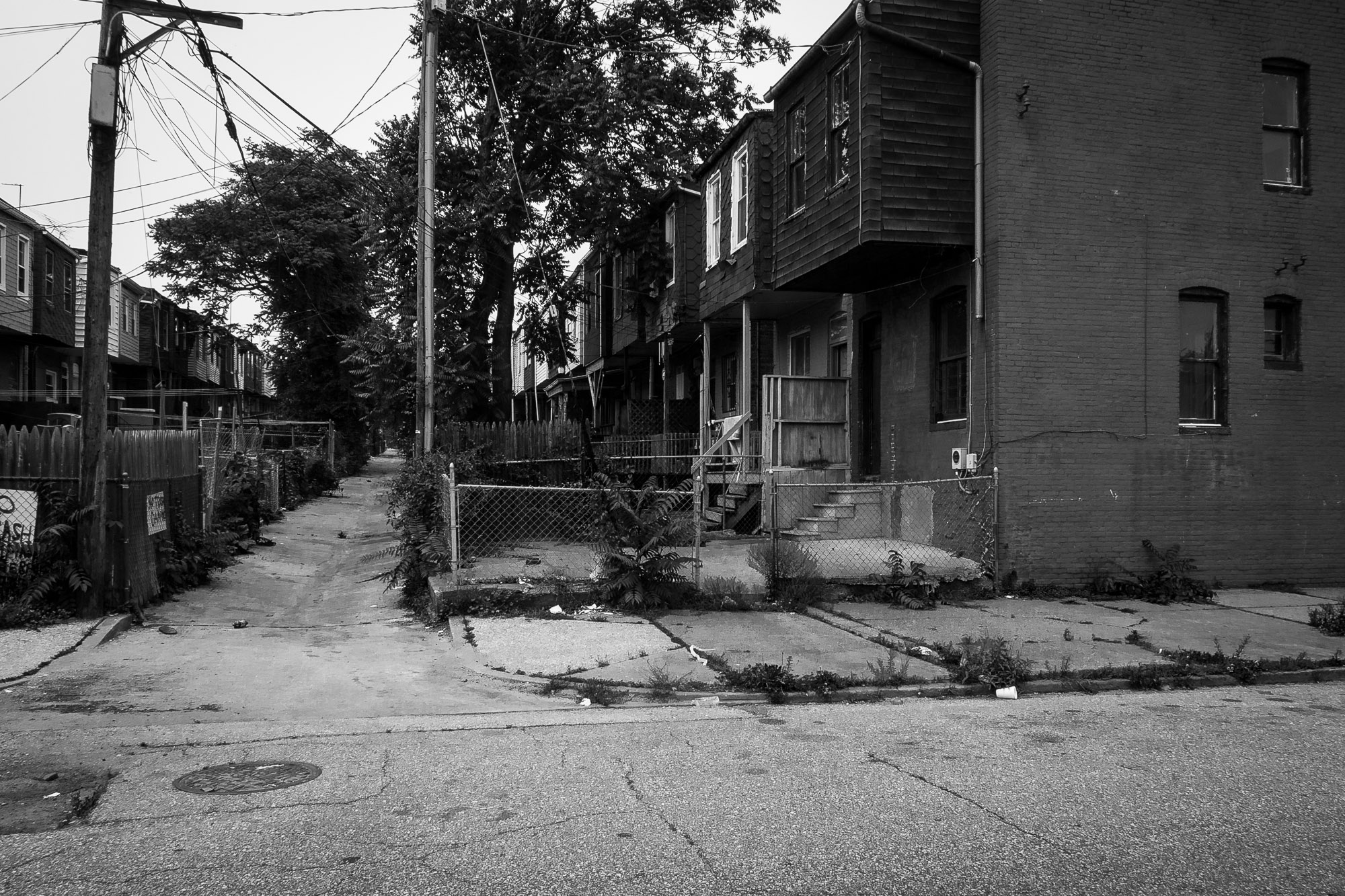
I was back in Baltimore not long ago for a conference. It was before the Freddie Gray incident, so there was no particular excitement in the city. A lot of sirens. A sign for prenatal paternity testing. It felt like the city I remembered.
Oddly, it also felt like home. The warm and humid harbour breeze, and the distinctively purple night sky—both felt as soothing as though I’d grown up beneath them, rather than in the sharper, colder air of a Toronto spring. And in some ways, maybe I had. I arrived in Baltimore an only child who’d lived with adoring parents in the same house since the age of four. In Baltimore I made my own home for myself, first in a small dorm room decorated with Reservoir Dogs posters, later in a once-glamorous, by-then-tired apartment building with parquet floors, pigeon-infested balconies, and a miraculous ravine view. After Baltimore, I lived in many places, including a Palo Alto low-rise with carports and a pool right out of Melrose Place, and a Silver Spring red-brick walk-up where someone got shot in the parking lot. But I would never live in my childhood house again.
When I returned to Toronto, where I live now, from that recent Baltimore trip, I tried to figure out why I still feel so attached to the city. After all, not only does the city have its problems—far too much familiarity with violence, sickness, and death—I have had them too. While I was at Hopkins, an older student who I knew, Bob Harwood, shot and killed a younger student I also knew, Rex Chao, right there on the lawn of the idyllic green campus. After shooting his friend Rex in the back of the head and then in the chest, straight-laced Bob calmly turned himself in to campus security. The dark half-joke going around at the time was that it took the Hop Cop (as we called the campus guards) “a full ten minutes to understand that it was Bob and not some random black guy who’d done it.” Which may—in its offensive way—wrap up Hopkins’ relationship with the rest of Baltimore better than anything I could say.
Baltimore was also the place I met a young man named Rajiv, who would go on to be my boyfriend for six years before being killed in a hit-and-run accident while returning videos to Blockbuster at the age of twenty-six. And it was the place I went through a painful period of trying out what seemed like dozens of different medications (remember the stomach ache?), none of which seemed to be nearly as effectual as their side effects.
After all that, why do I still love the city? “You felt joy there,” volunteered someone to whom I posed the question.
Despite everything, that seems right. I can still remember the small thrill of something as simple as going with university friends to see movies at a multiplex in the Inner Harbor. I would sip Cherry Coke—“We don’t have this at home,” I’d explain—and wonder at the police standing around the theatre entrances. Both their very presence and the wide-brimmed, southern-looking hats they wore seemed exotic and pleasantly strange. Little did I know that one day I’d be back in Toronto and find police serving the same role at the movie theatres at Yorkdale—and Cherry Coke available in at least a few select Toronto convenience stores.
I remember feeling proud when my pronunciation of “Baltimore” started to resemble a little more closely the “Bal’mer” of the natives. And there came a time when it felt like the red brick of both the campus and the down-at-the-heels row houses was becoming a part of my blood. In my senior year, I went briefly to the University of Chicago for a law school interview and returned to realize how much better I loved Baltimore’s modest skyline and unpretentious docks. I’d felt scared walking around Chicago’s Hyde Park neighbourhood. Back in Baltimore, I just felt that what would be would be.
Still, I never seriously considered staying in Baltimore. Why would I? It was (and still is) an economic wreck and both the police and crime were (and still are) out of control. So instead of packing off for Chicago, I packed off to go to law school at Stanford University in California. What I have since come to realize is that none of that means I don’t love Baltimore. It may be that the city’s sheer inappropriateness for a risk-averse Canadian makes me love it more.


